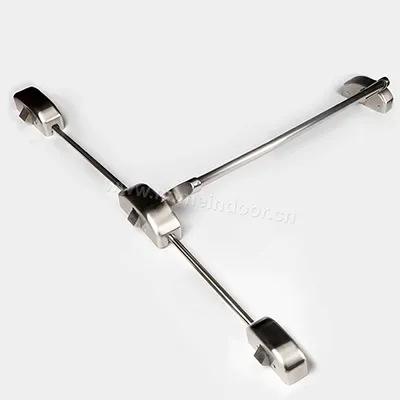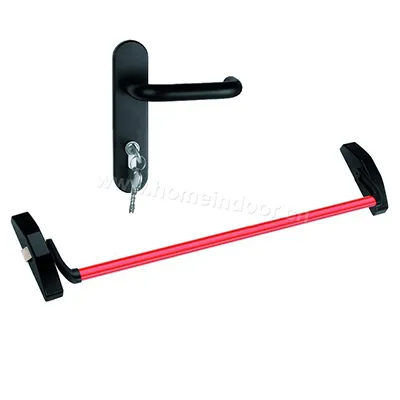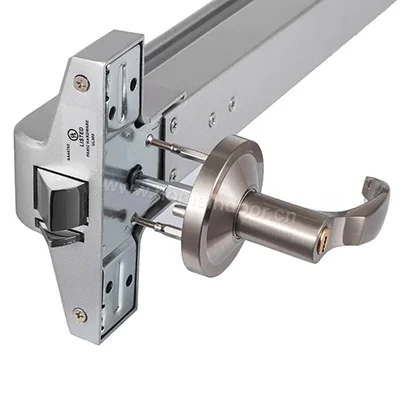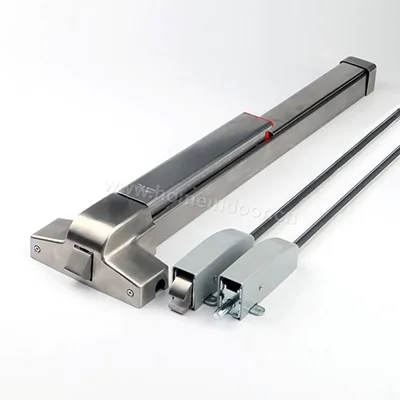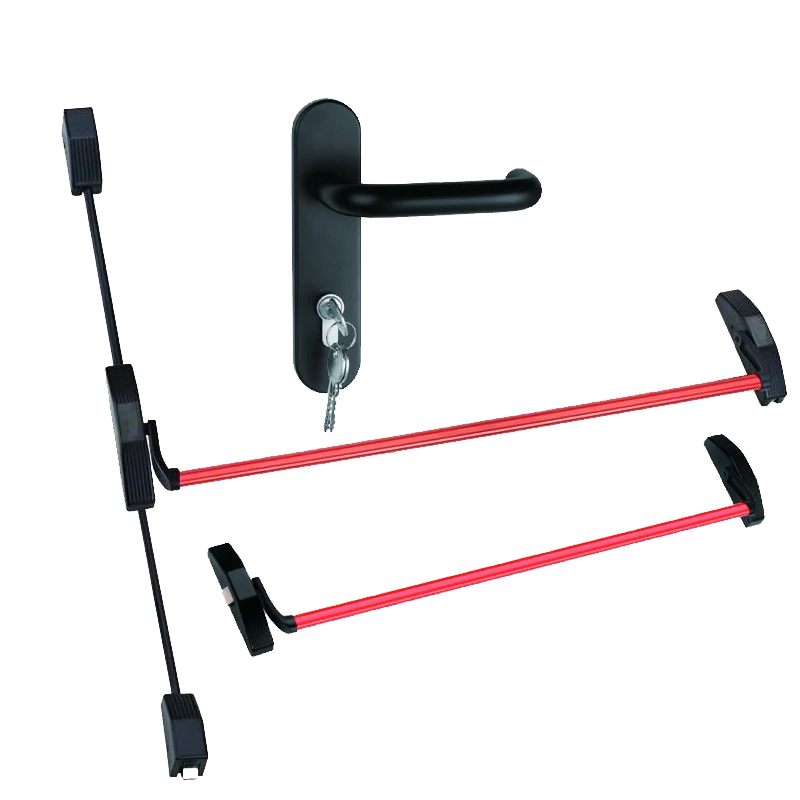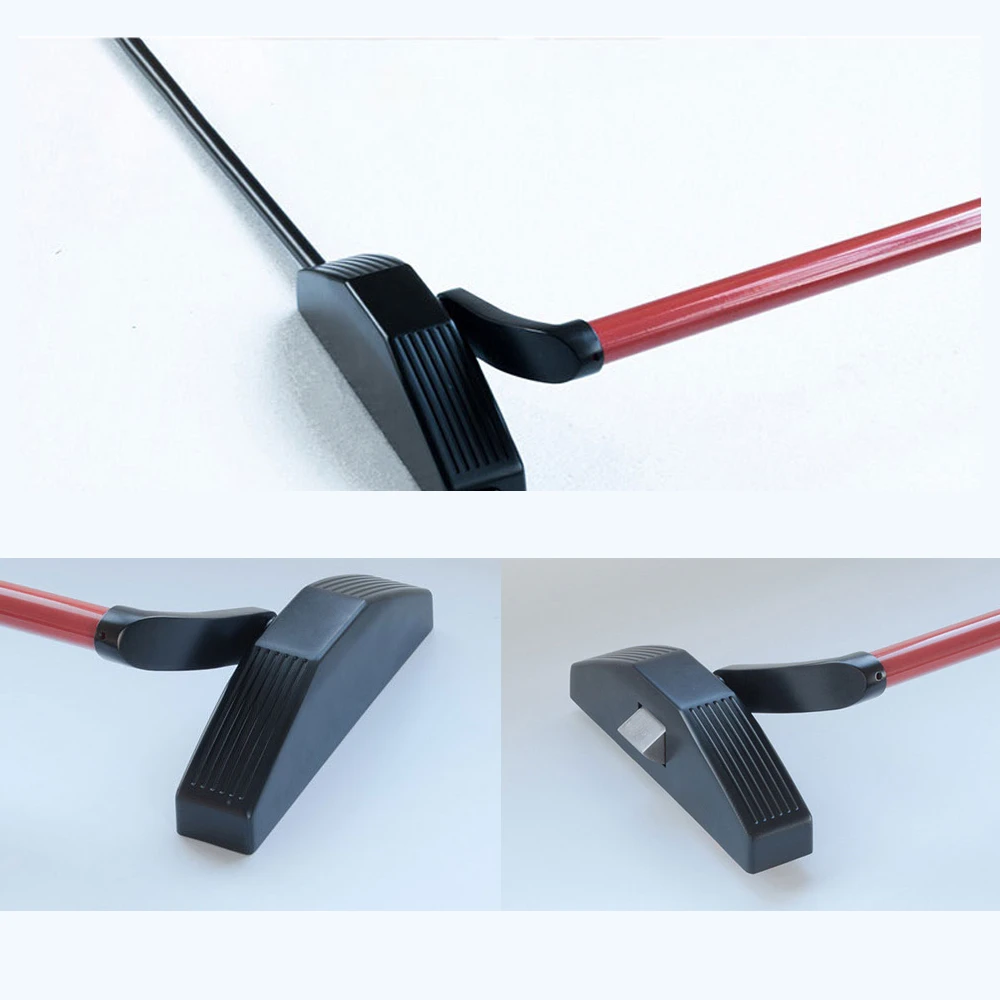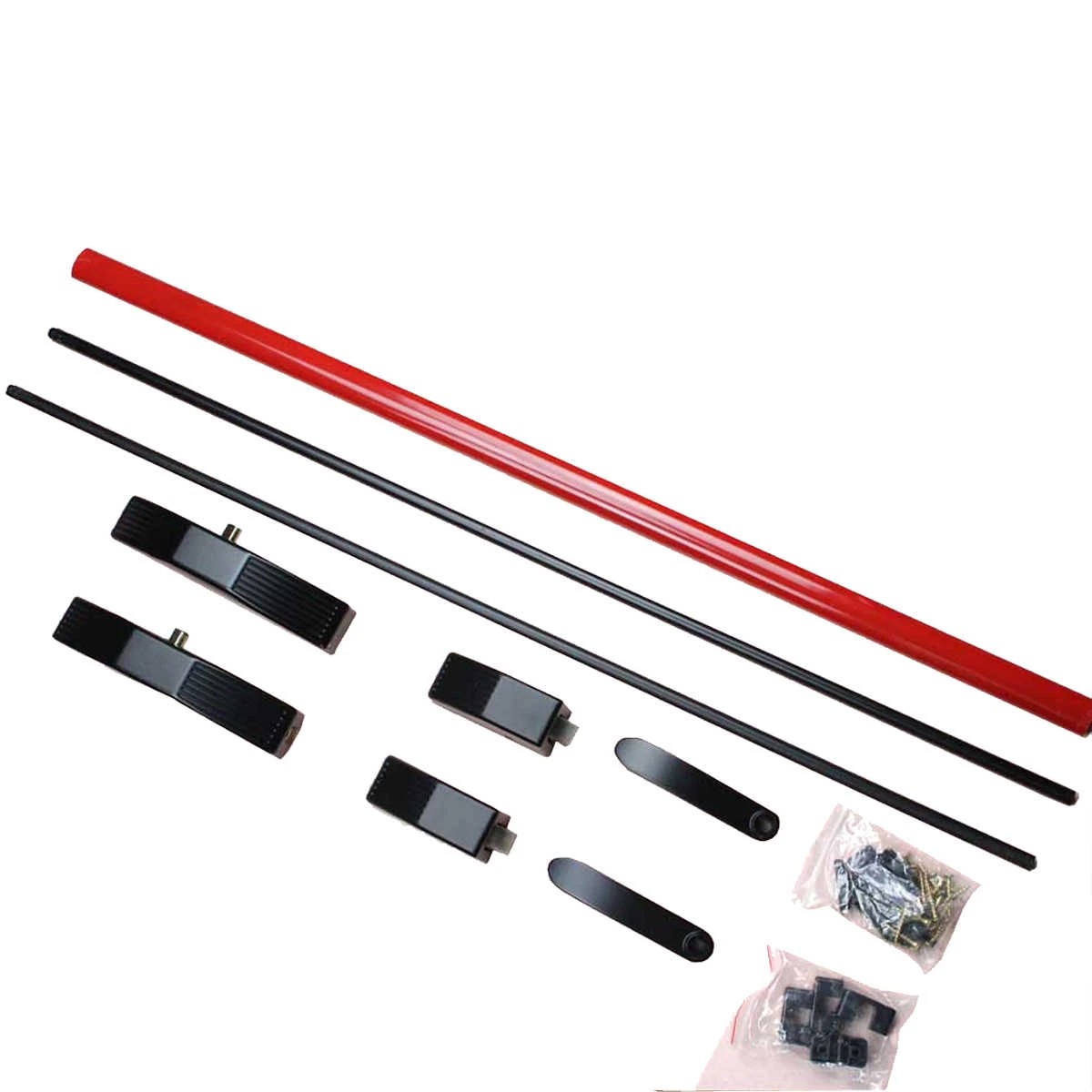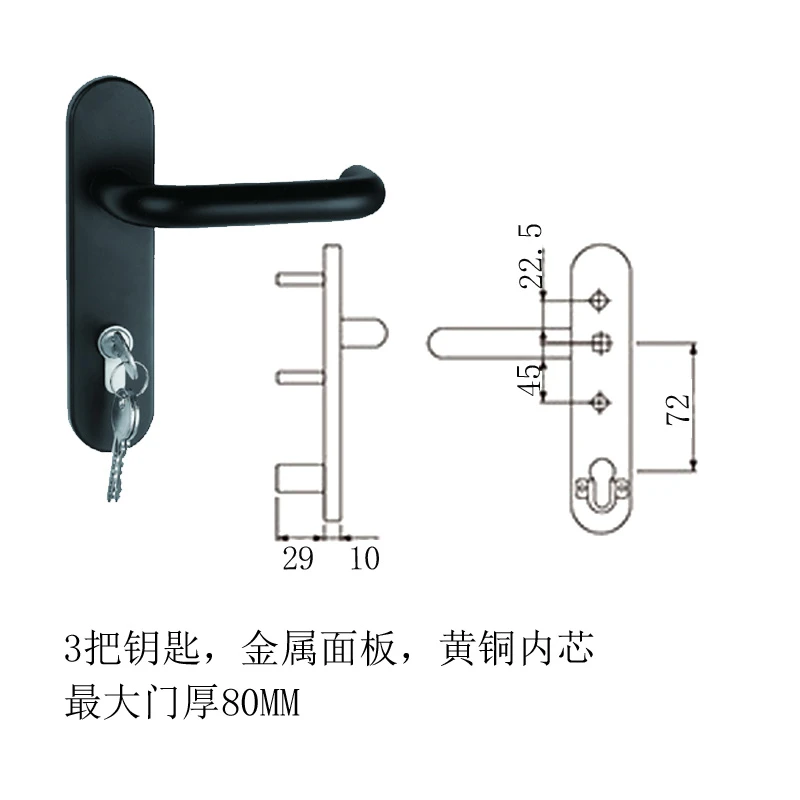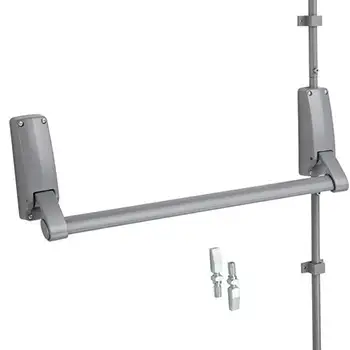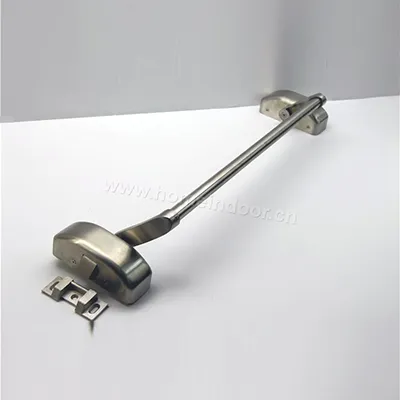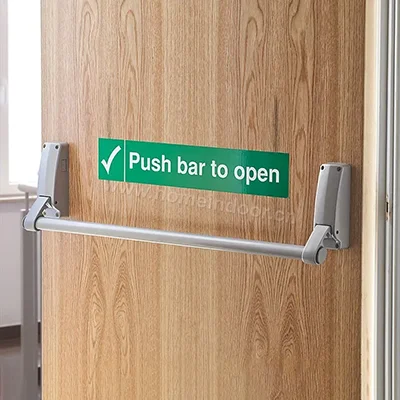A double door push bar device with vertical rod is a panic hardware system designed to allow easy exit in emergency situations while maintaining security and functionality for everyday use. This device typically includes a horizontal push bar across two doors, along with vertical rods that engage the latching mechanism at the top and bottom of the doors.
Here’s a detailed breakdown of the components and features:
1. General Description:
A double door push bar device with vertical rod is designed for exit doors that serve high-traffic areas, such as commercial buildings, schools, or public spaces, where fast and secure egress is required. It provides a hands-free, quick exit mechanism by simply pushing the bar. The vertical rods are engaged when the push bar is pressed, ensuring both doors securely latch and unlatch.
2. Key Components:
- Horizontal Push Bar: A long, horizontal bar typically made from metal (stainless steel, aluminum, or brass). Actuated by pushing the bar, which triggers the locking/unlocking mechanism of the doors. Designed for easy activation, allowing a person to exit quickly even in a panic situation or when their hands are full.
- Vertical Rods: Vertical rods run along the side of each door. These rods connect to the latching mechanism at the top and bottom of the door. Upon pushing the bar, the rods retract from the top and bottom strikes, allowing the doors to swing open. The top rod engages with a strike at the upper door frame, and the bottom rod connects with a floor strike to secure the door when closed.
- Latch Mechanism: The latching mechanism is located at the top and bottom of each door. Ensures the door is securely latched when the doors are closed. The push bar disengages the latch when pressed, allowing for immediate egress.
- Escutcheon Plate or Trim: Covers the hardware mounting on the door and helps protect the mechanism. Often designed to match the aesthetic of the door frame and building interior.
- Mechanical or Electrical Components: Mechanical models are standard for manual operation. Electromechanical versions may include features like delayed egress or integration with access control systems, allowing more controlled access while still providing quick exit.
3. Features and Benefits:
- Push Bar Functionality: Provides easy, panic-free access in emergencies, especially for crowded or public spaces. Typically ADA-compliant, ensuring accessibility for all individuals, including those with disabilities.
- Security & Safety: The vertical rods secure the door at the top and bottom, preventing unauthorized entry when the door is closed. The panic bar system ensures that even if the doors are locked, anyone can exit the building quickly in case of fire or emergency.
- Durability: The hardware is designed to withstand high-traffic use and is often tamper-resistant, making it ideal for commercial and public buildings. Made with high-quality metals that resist corrosion and wear.
- Double Door Compatibility: Ideal for double doors, where both doors need to be operated together for safe egress. Often used in wide entryways such as exit doors, corridor doors, or emergency exits.
- Non-Latching Option (Optional): Some versions of this hardware are designed to not latch on the second leaf, allowing only the first door to latch and unlock when the push bar is activated.
4. Applications:
- Commercial Buildings: Entrances or exits in office buildings, shopping centers, and restaurants.
- Schools & Universities: For classroom doors and corridors to ensure safe egress during drills or emergencies.
- Hospitals & Healthcare Facilities: Ensuring easy access for staff and patients, while maintaining security.
- Public Spaces: Museums, government buildings, theaters, and arenas.
- Hotels: Emergency exit routes and staff access doors.
5. Example Specifications:
- Finish: Stainless steel, brass, or powder-coated finishes to match door and frame aesthetics.
- Fire Rating: Compatible with fire-rated doors (must be installed correctly to maintain UL rating).
- Compliance: Meets NFPA 101, IBC, ADA accessibility, and UL or FM safety standards.
- Weight Capacity: Can accommodate up to a certain weight for double doors, typically up to 200 lbs per door.
- Options: Available in both mechanical (manual) and electromechanical versions with added features such as delayed egress, automatic locking, or access control integration.


